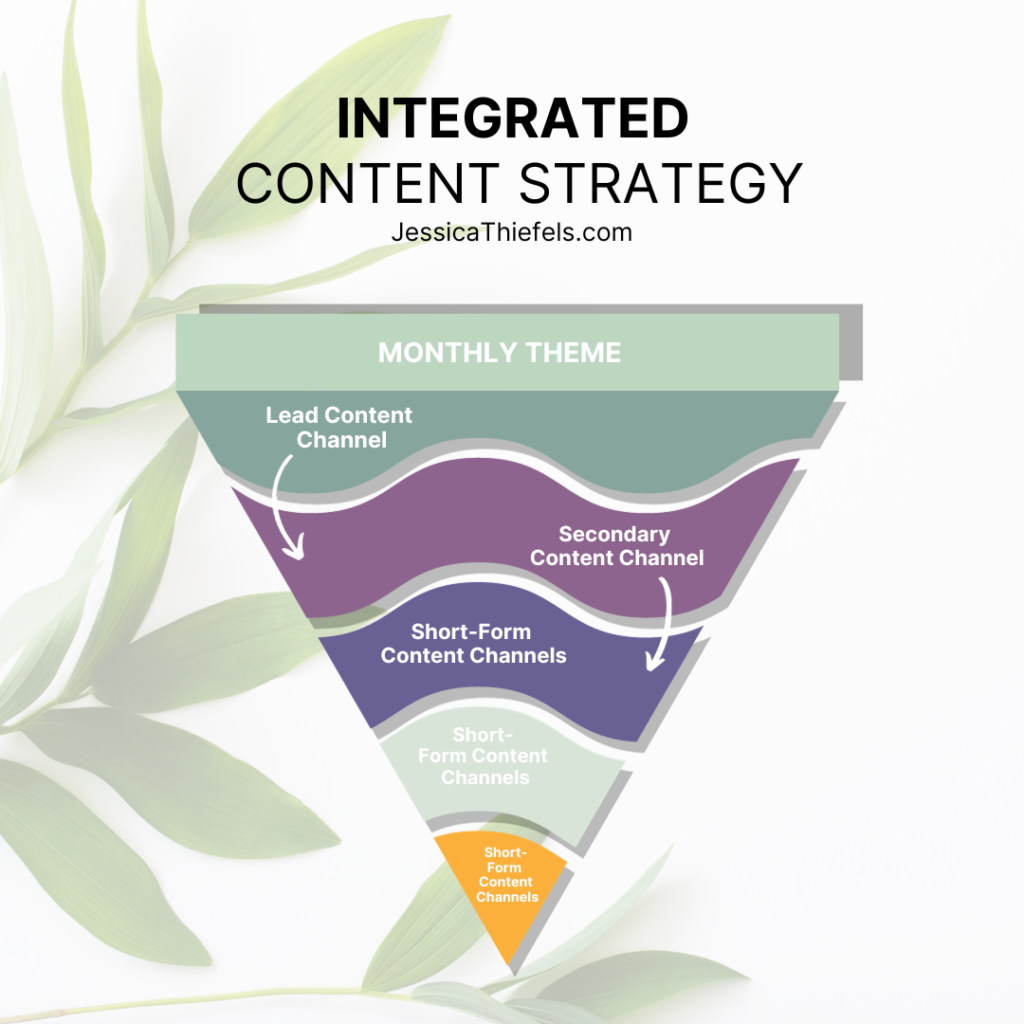There are hundreds of content marketing tips I could give you after 13 years of working in the organic marketing space. Today, however, I want to focus on the tips that get you closer to the bottom line: ROI. As a B2B mental wellness brand, that’s, of course, the focus of everything you do, marketing included—and for good reason.
To see success from your blog, however, you have to take a step back and address how you’re approaching content creation. While providing valuable content is important (of course, that’s what Google always cares about; they call it people-first content), using ROI as a foundation for the choices you make will help you be more successful in every aspect.
Turn your B2B mental wellness blog into a revenue-driving tool
1. Focus on Your Exact Audience
The only way you’ll see customers and clients come from content is if you’re writing for the right person. I know you don’t want to leave anyone out—but if you try to talk to everyone, you’ll reach no one. By getting hyper-specific, you allow yourself to speak the language of that ideal client—and when they feel heard, they’ll convert.
Challenge yourself to your ideal client avatar a layer deeper to better understand what they want to read or how you can best support them with your content. You may be surprised how good it feels to create content with this greater niche focus—plus, it’s easier!
2. Optimize the Content for Conversions
This may be something you see on every list of content marketing tips, but what are you doing to optimize your content for conversion? So often I see organizations publishing content but forgetting about this important piece. Luckily, there are a variety of ways to set up your content to support conversions. Here are a few that I like to use:
- Blog-specific pop-up
- In-text native ad
- Form fill at the bottom
- In-ad opt-in
3. Start With Repurposing in Mind
This is why I teach my clients to use an Integrated Content Strategy. Here’s what I mean when I say an Integrated Content Strategy:

Everything you do for the blog should work alongside every other marketing channel. Not only does this give your team more content, but it ensures that what you create gets as much mileage as possible, further increasing ROI.
This also ensures that you have seamless messaging from one platform to the next. Finally, it can give your internal team direction so planning is easier and faster.
4. Re-Think Metrics—and Start Tracking Them
Yes, conversions is an important metric to track in terms of content marketing ROI—but this isn’t the only metric that tells you the efforts are successful.
For example, you want to also track organic conversions for other important landing pages, all of which will also see a lift if your SEO is working. Don’t forget to look at stats like time on page and conversions for specific products or offerings. All of this will come together to paint a very clear picture of what’s actually going on and whether it’s working.
Take time to check in and note this data at the start of each month for the previous month. This allows you to pick out patterns of what’s working and what’s not so you can improve your strategy.
5. Set the Right Goals
When thinking about content ROI, look beyond conversions. Just like with your metrics, you need to think broader to make the conversions happen. How will your content process support conversion? Are you writing in a way that allows you to reach your specific audience?
You have to set the goals that help you create a holistic content strategy that ultimately leads to the conversions you want to see. Check out these five organic marketing goals to get an idea of what you should be focused on.
6. Be Consistent
Organic marketing efforts, like blog content creation, take time to work. You can’t just write one blog post here and there and expect to see results. It takes regular input (fresh content) for Google to see that you exist, start ranking your content, and then for that content to actually land in front of the right people.
While it can be frustrating to invest upfront without seeing immediate financial ROI, it’s the only way to get to the long-term ROI that comes with a well-ranking website. I recommend all my clients publish four SEO-optimized, well-written blog posts each month using a pillar/cluster strategy to create this consistency—see some of the successes we’ve had.
7. Leverage Keyword Data to Focus on the Right Topics
This is one of those content marketing tips that you might see everywhere—but likely still aren’t following. If you’re writing blog content based on what you think your audience wants to hear, you may be missing the mark. Not only does keyword research set you up for SEO success, but it allows you to check and see if your ideas are being searched or not.
For example, you might want to write about “how to support your employees’ mental health during the holiday season” but you find that this keyword has no search traffic. When you do your research, you notice that what your audience is actually searching for is, “mental health training for employees.”
Doing this research ensures that you write content your audience is actively looking for—which leads to that conversion you desire. Check out my recent blog post on the importance of secondary keywords for SEO and content creation.
8. Get Realistic
You won’t find this on any other content marketing tips list—but it’s the truth. Just because you’re creating content, doesn’t mean you’re going to see ROI. What goes into content that converts is a clear strategy, SEO optimization, consistent effort and so much more. If you’re just checking the box, you’re not going to reach that bottom-line goal, period.
9. Work With a Specialist
If you or the person on your team responsible for content creation is not an SEO expert, the time is now to start working with one. Creating content just to create it—without a strategy or SEO expertise—will unfortunately not get you very far.
If you need help in this area, check out my blog post, How to Choose an SEO Copywriting Services Provider for Your Wellness Business, to get a sense of what to look for and how to find the right person.
10. Zoom Out
Ultimately, to be successful with your B2B mental wellness blog, you have to zoom out and look at the full picture. Your marketing strategy should take the entire ecosystem into consideration to boost efficiency and overall success.
If you want to be more successful with your content marketing, look at social, ads, email and other platforms to see how they all work together (if they’re working together at all). So often, various marketing channels operate in a silo, but each can support the other in some way.
Create a system and documented strategy that includes every aspect of your marketing to generate the greatest ROI from everything you publish.
Content Marketing Tips for Greater ROI—Take the Next Step
I hope these tips helped you rethink the way you’re approaching content creation for your B2B mental wellness business, but this is likely just the first step. If you want to fully leverage organic search as a channel for traffic and revenue, you have to do it with a clear strategy. My team and I can help you do that.



